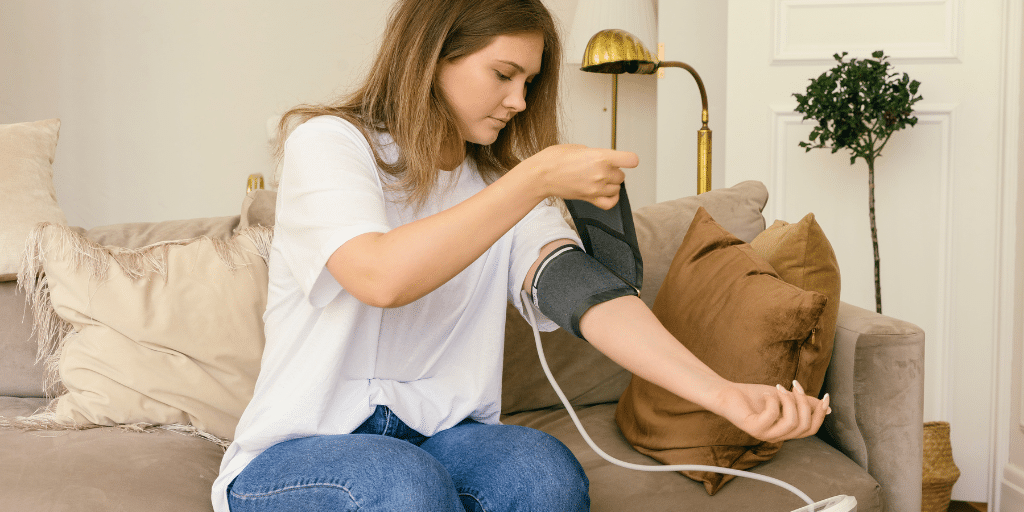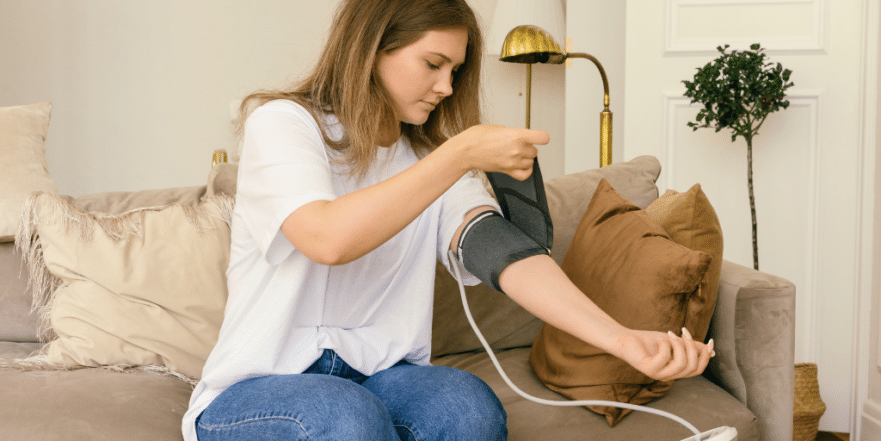
I hate to say it, but there’s a very high chance that you—and maybe even your healthcare provider—are checking your blood pressure incorrectly. It’s a startling thought, but it’s true. We know that just being in a doctor’s office can cause your numbers to spike, a phenomenon called “white coat hypertension,” which can give a completely misleading picture of your health. This is why learning how to measure your blood pressure accurately at home is one of the most powerful and important things you can do for your long-term well-being. An incorrect reading can lead to unnecessary medication or, even worse, a false sense of security when a real problem exists.
In this article, we’re going to walk through the most common mistakes people make when taking their blood pressure. These aren’t minor details; some of these errors can inflate your reading by a staggering 15, 20, or even 30 points. We’ll break down exactly what you’re doing wrong and give you a clear, step-by-step guide to finally get the true, accurate numbers you need to protect your health. (Based on the expertise of Dr. Siobhan Deshauer.)
Key Takeaways
- Preparation is Everything: Before you even put the cuff on, you need to rest for at least 5 minutes in complete silence, avoid caffeine for 30 minutes, and make sure your bladder is empty.
- Position Matters More Than You Think: You must be sitting in a chair with your back supported, both feet flat on the floor, and your arm propped up so the cuff is level with your heart.
- Your Equipment is Crucial: Use a properly sized upper-arm cuff from a device that has been independently validated for accuracy. Wrist cuffs are generally not recommended.
- Consistency is Key for Accuracy: To get a true picture of your health, measure your blood pressure twice in the morning and twice at night for a full week, then average the results. A single reading means very little.
1. You’re Not Resting Before You Measure
This is the classic mistake. You walk into the room, sit down, wrap the cuff on, and immediately press start. If you don’t rest quietly for at least five minutes before taking a measurement, your body hasn’t had a chance to settle into a true resting state. Any recent activity, even just walking from another room, means your heart is beating a little faster and your blood pressure is temporarily higher. Taking a reading in this state can artificially increase your systolic blood pressure (the top number) by up to 11 points. To get an accurate reading, you need to find a quiet space, sit down in the correct position, and just relax for five full minutes. No distractions, no moving around—just be still.
2. You’re Talking or Scrolling on Your Phone
Silence is golden, especially when measuring blood pressure. Many people think it’s harmless to have a casual conversation or scroll through their phone while the cuff is inflating, but this is a significant error. Talking, texting, or even just actively listening activates your sympathetic nervous system—your body’s “fight or flight” response. This causes slight muscle contractions throughout your body and can add another 7 points to your reading. The goal is to measure your body at rest, and your body isn’t truly at rest if your mind is engaged. For those five minutes of pre-measurement rest and during the measurement itself, put your phone away and ask that no one speak to you. It makes a real difference.
3. Your Positioning is All Wrong
This is a three-part mistake, and the combined effect can be massive. First, you must have your back supported. If you’re sitting on a stool or perched on the edge of a sofa, your core and back muscles are working to hold you upright. This muscular effort can add up to 10 points to your systolic pressure. Second, your legs must be uncrossed with both feet flat on the floor. Crossing your legs can compress blood vessels and tense your muscles, adding as much as 15 points to your reading—it’s one of the worst mistakes you can make. Finally, your arm must be supported at the level of your heart. If your arm is hanging down or resting in your lap, your reading can be up to 6 points higher. The ideal setup is sitting in a firm dining room chair, back straight against it, feet flat, with your arm resting on a table or pillows so that the cuff is level with the middle of your breastbone.
4. You’re Using the Wrong Arm (or Only Ever Using One)
Most people have a slight difference in blood pressure between their two arms. For this reason, you should always use the arm that gives the consistently higher reading, as this is more representative of the maximum pressure your circulatory system is under. When you first start monitoring at home, take a week to measure both arms. Identify which one is higher and make that your designated arm for all future measurements. It’s important to note that if one arm is consistently measuring 10 points or more higher than the other, you should not ignore it. This could be a sign of a vascular issue, like a narrowing of the subclavian artery, and is something you should discuss with your doctor.
5. You Haven’t Emptied Your Bladder
This is a factor that almost everyone overlooks, but it has a surprisingly powerful effect on your blood pressure. Having a full or even partially full bladder sends signals to your brain that activate the sympathetic nervous system, causing your blood vessels to constrict. This response can increase your blood pressure by an impressive 15 points. It’s a simple fix with a huge impact: always make a trip to the restroom before you sit down for your five-minute rest period. Don’t let a full bladder give you a falsely high reading and unnecessary anxiety.
6. You Just Had Your Morning Coffee or a Cigarette
Consuming any stimulant before measuring your blood pressure is a recipe for an inaccurate reading. The most common culprit is caffeine. In someone who doesn’t regularly consume caffeine, a single cup of coffee can briefly increase systolic blood pressure by up to 10 points. While your body may adapt if you’re a daily coffee drinker, it’s still best practice to wait. The standard recommendation is to avoid caffeine, nicotine, and alcohol for at least 30 minutes before checking your pressure. Don’t feel you have to skip your morning coffee entirely, as a caffeine withdrawal headache could also spike your pressure. Just be sure to schedule your measurement before your coffee, not after.
7. Your Cuff Doesn’t Fit Properly
Cuff size is not one-size-fits-all. Imagine trying to use the same cuff on a slender person and a bodybuilder—it simply wouldn’t work. Using a cuff that is too small for your arm will cause it to over-squeeze the artery, leading to a falsely high reading of up to 11 points. Conversely, a cuff that is too large will not provide enough compression and can give you a falsely reassuring low number. The only way to know for sure is to measure the circumference of your upper arm with a flexible tape measure and compare it to the range printed on the cuff itself. When you buy a machine, make sure you are buying one with the correct cuff size for you.
8. You’re Using an Unreliable Monitor
Not all blood pressure machines are created equal. With the rise of online marketplaces, there are many cheap, unvalidated knock-offs out there. More and more people are also using wrist monitors for convenience. While convenient, wrist monitors are highly prone to error. The arteries in the wrist are narrower and not as deep as the one in your upper arm, and even a tiny change in the position of your hand can throw off the reading significantly. For this reason, upper-arm cuffs are strongly recommended unless you are physically unable to use one. To ensure your device is accurate, I always tell my patients to choose a monitor that is listed on ValidateBP.org. This organization uses a rigorous, independent process to test and approve blood pressure monitors for clinical accuracy.
9. You’re Relying Only on In-Clinic Readings
As mentioned earlier, the doctor’s office is often the worst place to get a true blood pressure reading. There are two dangerous phenomena at play. The first is “White Coat Hypertension,” where anxiety about the medical setting causes a temporary spike in blood pressure. This affects up to 20% of people and can inflate a reading by 30 points, potentially leading to a misdiagnosis of hypertension. Even more common and dangerous is “Masked Hypertension.” This affects up to 30% of people and is the opposite situation: your blood pressure is normal at the doctor’s office but high the rest of the time. This is incredibly risky because the problem goes undetected. For both of these reasons, regular home monitoring is the only way to know what’s really going on.
10. You’re Not Measuring Consistently
Your blood pressure fluctuates constantly throughout the day based on stress, activity, sleep, hydration, and more. A single high reading is not a cause for panic, and it’s certainly not a diagnosis. Hypertension is about chronically elevated blood pressure over time, which is what damages your blood vessels and organs. To account for these daily fluctuations and get a true average, you need a consistent measurement schedule. The recommended protocol is to take your blood pressure twice in the morning (right after you wake up and use the restroom, but before coffee or medication) and twice at night (just before bed). Do this for one full week and then average all the values.
11. You’re Only Taking One Reading at a Time
Whenever you sit down to measure, you should always take at least two separate readings. The very first measurement is often slightly higher than the subsequent ones. This can be due to a bit of anticipatory anxiety or simply your body’s initial reaction to the cuff squeezing your arm. By waiting a minute after the first reading and then taking a second one, you allow your body and blood vessels to relax, giving you a more accurate number. You should then record the average of those two readings. This simple habit of taking two readings in the morning and two at night provides a much more stable and reliable dataset.
Conclusion
Getting an accurate blood pressure reading isn’t difficult, but it does demand careful attention to detail. By consciously avoiding these common mistakes, you empower yourself with the correct information about your cardiovascular health. The goal isn’t to chase a single “good” number but to understand your body’s true baseline over time. If you follow these steps and find that your average reading is consistently over 130/80 mmHg, it’s time to have an informed conversation with your doctor. Taking control of your monitoring is the critical first step to taking control of your health.
Source: Dr. Siobhan Deshauer

